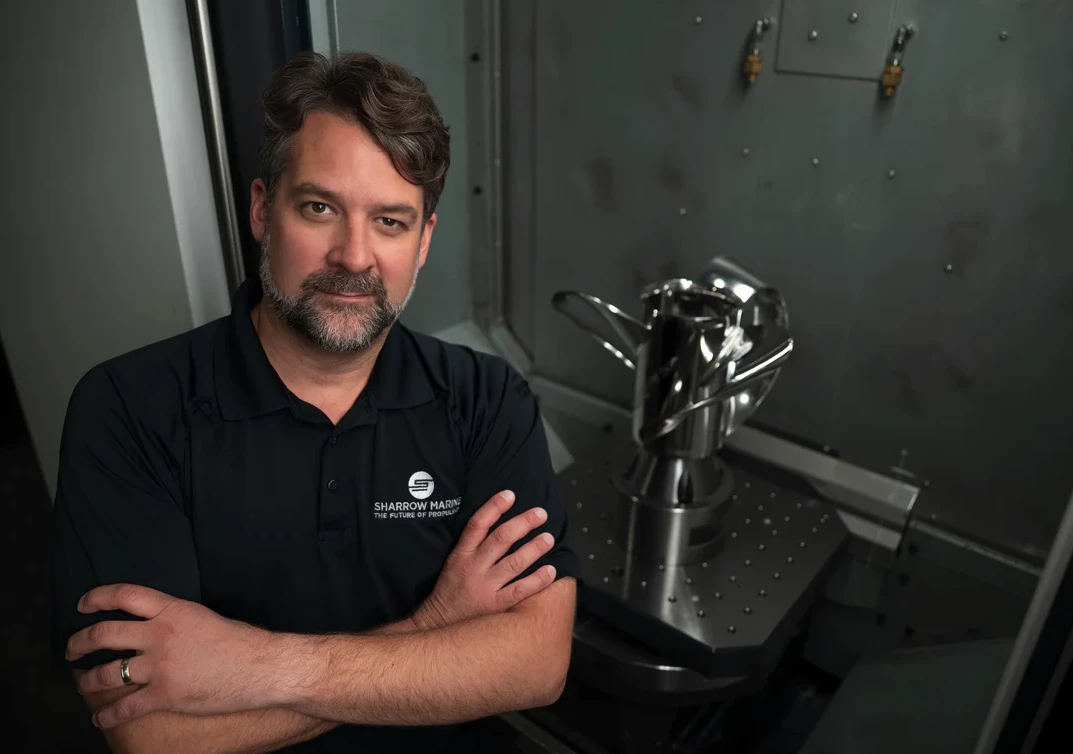Sharrow Marine has quietly been working to disrupt the marine industry with a reimagined propeller it calls the "future of propulsion." The tech originally looked like it might be too expensive and make/model-specific to see that future to fruition in a substantial way, but Sharrow has now introduced the more affordable, consumer-friendly MX-A. Less than half the price of previous models, the latest Sharrow propeller works with smaller outboards of just 40 hp and up, and it's compatible with motors from a who's who of the largest, most popular brands in the industry.
Sharrow has redesigned the common marine propeller by replacing the usual blades with gently twisted loops that promise to eliminate efficiency-sapping tip vortices and cavitation. Put simply, less energy is wasted, leading to claimed efficiency boosts of up to 30%, not to mention smoother, quieter overall performance.
Not only has Sharrow's 150-patent-deep design won a host of major awards from the marine and tech industries, it's been put to the test on numerous vessels, both internally and by third-party reviewers, with some intriguing results.
The first time we took a look at Sharrow's unique propeller design, we noted that the one big drawback seemed to be price. At about US$5,000 a pop to start, they were an estimated 10 times more than a typical propeller, a steep upfront investment that might be difficult to recoup even with a 30% efficiency boost.
Another issue was that the propellers were designed for either motors in the 150-hp+ category or for specific makes and models or styles, limiting their overall applicability and appeal.
The all-new MX-A may not solve those problems outright, but it is a major step in making Sharrow's innovative prop tech available to a broader market of boaters. At a base price of $1,995, it's still more expensive than your average prop, but it better than halves existing product pricing and reworks the value proposition that goes along with it. The propeller will now be compatible with smaller vessels like pontoons and fishing boats.
As for compatibility, Sharrow says the new prop will work with 2-stroke, 4-stroke, command thrust, in-line 4-cylinder, and power thrust motors, fitting outboards from major brands that include Mercury, Yamaha, Honda, Suzuki, Tohatsu, Johnson, and Evinrude.

“With the MX-A series, we’re taking the same groundbreaking propeller technology we pioneered for larger engines and making it accessible to boats in the 40 – 200-hp range," said Greg Sharrow, founder and CEO. "This is a huge leap forward in performance for a segment that has been waiting for true innovation. We are thrilled to finally bring smaller outboards the efficiency and handling upgrades they deserve."
In contrast to Sharrow's previous stainless steel releases, the MX-A series is CNC-machined from aircraft-grade aluminum. The bright mirrored red look is an interesting new addition that will spice up the water far more than the average propeller.
Orders can be placed on Sharrow's website now. The MX-A will be built at Sharrow's Detroit production facility, with lead time estimated at four to six weeks. Sharrow backs each prop up with a 30-day satisfaction guarantee and lifetime warranty.
Source: Sharrow Marine




